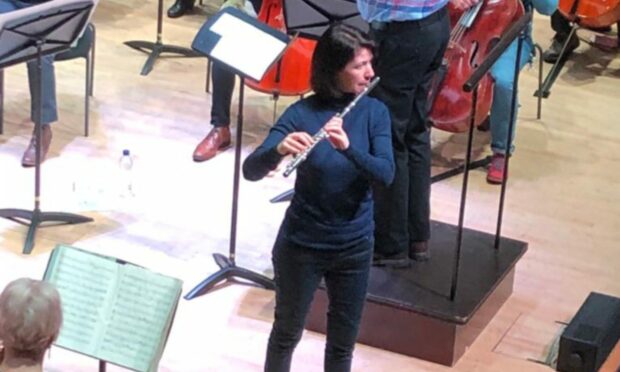It was a great relief on Saturday to see the Dundee Symphony Orchestra at last returning to performance in the Caird Hall.
A fair-sized audience spread itself throughout the stalls to hear a programme of cheering music that can loosely be described as ‘Serenades’.
At this time of year the orchestra usually please large scale works from the romantic era.
That was the original plan, but the intervention of Coronavirus enforced a change.
To allow for proper levels of social spacing on stage when arrangements were being finalised, the size of the orchestra had to be reduced, with Robert Dick conducting a completely altered programme.
Not usually played in Dundee
It is to be hoped that this is only a temporary measure, but it allowed the audience to hear pieces not usually played in Dundee.
The first was by Gounod from the mid-19th Century.
Entitled a Little Symphony for Winds, it was the kind of Serenade or Nonet that was hugely popular earlier in the century.
The instruments were a single flute, leading pairs of oboe, clarinet, horn and bassoon. It was full of cheerful melodies and made a delightful start to the evening.
Highly accomplished soloist
The second item was the first Flute Concerto by Mozart, with Aisling Agnew as a highly accomplished soloist.
This was originally scheduled for last year, and is a charming work that was worth the wait.
While everything about the concerto was quite small in scale, there was never any difficulty in projecting sound into the huge space, and the solo instrument was unfailingly sweet-toned, with delightfully varied cadenzas in each movement.
True Mozart Serenade
There was a second Mozart item, this time a true Serenade. It is such a delightful work, and so familiar sounding, that it is surprising that the Serenata Notturna is actually so rarely heard.
It has several sections in which a small group of strings – two violins, viola and double bass, combine to provide contrasting effects.
There is also a prominent role for drums, used to provide contrast.
It must be quite difficult to achieve a good balance with these, but the sound world created by this Serenade is most unusual and quite fascinating.
A wonderful piece
The final item in the programme was perhaps the most familiar.
Elgar composed his wonderful early Serenade for Strings, op20, in 1892, long before the other works for which he is famous. And yet it is a quite wonderful piece, oddly condemned as unfashionable and difficult by his first publishers.
It is among the first of the group of wonderful compositions for strings by British composers that continued into the 20th Century – pieces by Vaughan Williams, Holst, Warlock and others.
The central slow movement indicates the way to the central sections of his great works – Nimrod from the Enigma Variations, the Violin and Cello Concertos and his symphonies.
A few rough edges at first
There were undoubtedly a few rough edges in the orchestral playing, at least in the strings, during the Mozart – hardly surprising when it was so long since the players had been able to rehearse together.
However by the time they reached the Elgar things had settled down nicely. No doubt when the orchestra gives an all-Beethoven concert in March they will have returned to form.
It was also good to see audiences beginning to return after the long lay-off.
